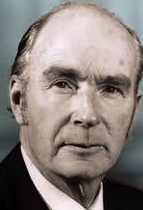
Diplomatic Considerations Behind Patrick Hillery’s Decision Not to Attend the 1981 Royal Wedding
In 1981, Irish President Patrick Hillery faced a delicate diplomatic situation when invited to the wedding of Prince Charles and Lady Diana. The Irish government carefully considered how to respond to the royal invite, aware that the decision could impact relations with both Britain and the public.
The invitation, extended to Hillery and his wife for the wedding on 29 July at St Paul’s Cathedral, came with a request for an RSVP by 26 June. Government officials debated whether to respond before or after the upcoming Irish general election, acknowledging that either timing could be perceived as discourteous. A briefing note outlined that as the president would be sending a “negative” response, offering a diplomatic excuse would be essential to avoid misinterpretation, both domestically and internationally.
The note also highlighted the sensitive timing of the invitation, coming just a month after IRA hunger striker Bobby Sands’ death. Sands’ 66-day hunger strike was part of a campaign to gain political prisoner status for those imprisoned during the conflict in Northern Ireland. With Anglo-Irish relations tense due to dissatisfaction with British policies on Northern Ireland, attending the wedding could attract unfavourable comment, the briefing noted. Thus, the decision to refuse the invitation was considered politically prudent, and officials assured that the refusal would not damage the diplomatic relationship with the UK.
On 26 June, the Irish ambassador to the UK officially conveyed President Hillery’s gratitude for the invitation but regretted that due to prior commitments, the president would not attend. The ambassador added that Hillery had instructed them to represent Ireland at the event on his behalf.
Further diplomatic notes, released later, also provide insight into some other royal interactions that raised eyebrows. In 1993, the Irish ambassador in London reported Princess Diana’s comment regarding Northern Ireland, which was seen as a disregard for constitutional sensitivities. This comment came ahead of an important visit by Irish President Mary Robinson to the UK, which marked the first time a serving Irish president visited the British monarchy.
In the lead-up to this visit, a briefing note noted that Prince Charles had often expressed interest in visiting Ireland. Meanwhile, Princess Diana’s visit to Northern Ireland was discussed, with her controversial remark noted for its lack of awareness of the constitutional complexities surrounding the region.
The documents also detail the political agenda for President Robinson’s visit to London, where she was scheduled to meet with Queen Elizabeth II to discuss a variety of issues, including Northern Ireland, cross-border relations, and Britain’s involvement in international conflicts. The diplomatic significance of this visit was underlined by a comparison made by an observer to a meeting that took place 400 years earlier between Queen Elizabeth I and the Irish Queen Grace O’Malley.
The meticulous planning behind both Hillery’s and Robinson’s visits reflects the complexity of Irish-British relations, especially during periods of political tension.












